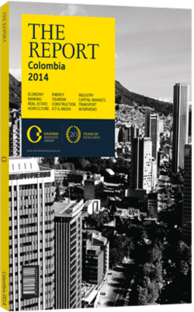A successful peace deal would have wide-ranging effects
It is not easy to forecast the exact economic, demographic and social impact of a signed peace accord between the national government and the Revolutionary Armed Forces of Colombia (Fuerzas Armadas Revolucionarias de Colombia, FARC). The question is not whether it would have a big impact, but exactly how big and after how long. Colombia could see vast demographic changes as many of its 5.7m displaced citizens – a number second only to Syria’s – return home. Farmers have sought security away from the countryside for 50 years since the conflict broke out in 1964.
Rural Shift
Their return to rural areas will boost the development of the agricultural sector. In recent years, however, the countryside has suffered from a lack of productivity due to delays, the extremely high prices of acquiring technology and inputs, and logistical difficulties. While the sector’s future is being discussed in Havana as part of the peace talks, Rubén Darío Lizarralde, the agriculture minister, is working to reduce the sector’s subsidies. “These subsidies are not a permanent measure, but a temporary support,” he told OBG. “We need to apply those resources to public goods and to incentives that promote productivity.”
Despite the difficulties, Colombia has developed efficient models for certain sub-sectors. One of these is coffee, where the National Federation of Coffee Growers acts as a cooperative to further the interests of coffee producers. Colombian coffee, which in 2013 saw production grow by 41% and exports by more than 35%, could surpass these figures with the arrival of peace. Other products that could benefit, because they can be produced in conflict areas, are palm oil (in the eastern plains and the north coast), sugar (in the west) and potatoes (near the southern border).
Demographic changes would also drive a need to build new houses, hospitals, schools and infrastructure in areas now controlled by guerrillas. In the past year, the Ministry of Agriculture and Rural Development, along with the Ministry of Housing and Banco Agrario, have been promoting the construction of 186,000 homes in rural areas under the Rural Social Housing Programme. The government’s ambitious plans for housing should therefore focus further on the conflict areas.
More Tourism
International tourism has been scant since the conflict began – particularly since the decades of terror in the 1980s and 1990s. In 2013, 1.83m foreigners visited Colombia, an 8.2% increase on the previous year’s 1.69m, according to data from Proexport Colombia, the state agency for promoting foreign trade. Despite higher visitor numbers, in 2013 Colombia slipped seven places in the World Economic Forum’s travel and tourism competitiveness index, from 77th in 2012 to 84th. Colombia aims to increase arrivals to 4m in 2014, Sandra Howard, vice-minister of tourism, told reporters. Improved safety, better roads and enhanced tourism infrastructure would help to achieve this, but the real boost to the sector will come from a peace agreement.
Challenges
Numerous opportunities will follow the signing of a peace deal, but so will an equal number of challenges. The recovery of the rural areas through the demobilisation of guerrillas – in September 2013 the Ministry of Defence estimated there were 7200 FARC soldiers – and the eventual reduction of active Colombian armed forces will need a substantial effort by the public sector to prevent unemployment figures from rising. Spending on defence and security, at COP27.2trn ($13.6bn) or 17.9% of the national budget, is the highest single allocation. Some of these funds could be reassigned to further develop sectors such as education, health and public pensions.
Social Effects
At a social level, another huge challenge is to reintegrate guerrillas. To this end, the Colombian Reintegration Agency was created in November 2011, and has since been working to raise awareness and social tolerance for demobilised fighters. The social reaction has been mixed. As Alejandro Eder, the agency’s general director, told OBG. “All Colombians are eager for an end to the conflict, but few are willing to forgive. Paradoxically, the families showing the most compassion for the guerrillas are those of the victims.”
You have reached the limit of premium articles you can view for free.
Choose from the options below to purchase print or digital editions of our Reports. You can also purchase a website subscription giving you unlimited access to all of our Reports online for 12 months.
If you have already purchased this Report or have a website subscription, please login to continue.

